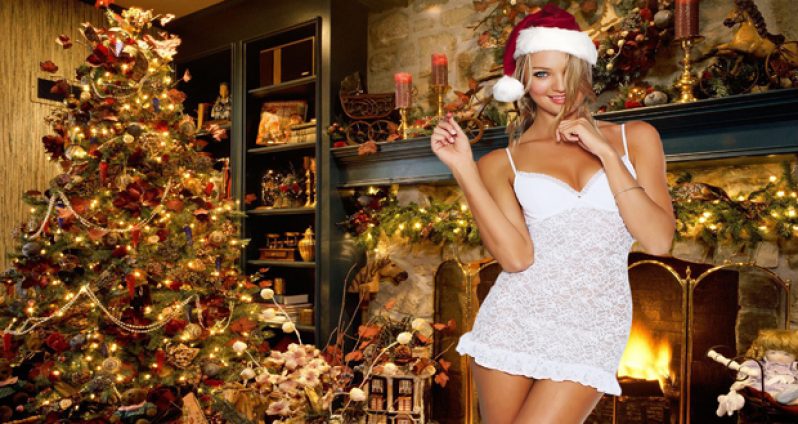CHRISTMAS, for many people, is about giving and getting presents. Children almost explode in anticipation on Christmas morning. Far-sighted givers start stockpiling months ahead, whereas the procrastinating multitude flocks to the stores and markets the week before Christmas.The gift-giving tradition of Christmas has its roots in the Three Kings’ offerings to the infant Jesus when the Magi travelled to Bethlehem to present Christ with gifts. Some Eastern Orthodox churches and European countries still celebrate the traditional date of the Magi’s arrival – January 6, or Three Kings’ Day – with a Christmas-like gift exchange. The Romans traded gifts during Saturnalia, and 13th century French nuns distributed presents to the poor on St. Nicholas Eve.
Gift-giving did not become the central Christmas tradition it is today until the late 18th Century.
Gifts were ostensibly meant to remind people of the Magi’s offerings to Jesus and of God’s gift of Christ to humankind. But despite the rationalized Christian roots of gift-giving, the practice ultimately steered Christmas closer to the secularized holiday it is today.
Stores began placing Christmas-themed ads in newspapers in 1820. Santa Claus, the increasingly popular bearer of gifts, started popping up in ads and stores 20 years later. By 1867, the Macy’s department store in New York City stayed open until midnight on Christmas Eve, allowing last-minute shoppers to make their purchases.
Today, Christmas is a bona fide gift-giving bonanza. Stores bring out the tinsel and greenery in early October. Most retailers rely on the holidays to make up for previous slow months, and prepare for the slow sales of the New Year. This dependence has made Christmas, a single day in late December, swell into a three-month holiday season. “The holidays” — with their sales, decorations and mall Santas — now reign through nearly a quarter of the year.
Other Christmas traditions also have ancient roots that are pre-Christian roots and originate from pagan winter-solstice celebrations or Roman festivals. Other traditions are relatively modern. Some significant holiday traditions include decorations, activities and food.
Christmas decorations
With people spending billions on decorations – yes, billions – it’s clear that tinsel, green trimmings and electric lights are an important part of most people’s holiday. Evergreen trees and garlands were used as decorative symbols of eternal life by ancient Egyptians, Chinese and Hebrews; and European pagans sometimes worshipped evergreen trees. By medieval times, western Germans used fir trees to represent the Tree of Paradise in mystery plays about Adam and Eve. They decorated the trees with apples, and later with wafers, to symbolize the host. The trees grew increasing popular in Germany and settlers introduced them to North America in the 17th Century. Many people also decorate with holly, mistletoe and ivy.
Decorators started lighting up their trees with electric bulbs in the 1890s. Those lights have since become an integral part of Christmas decorating.
Christmas activities
Outdoor light displays and other decorating traditions have created Christmas activities of their own. Decorators sometimes compete over the most ornate lighting displays, and spectators walk or drive through neighbourhoods to marvel at the exhibits.
Schools and churches often stage Christmas pageants that reenact the Nativity. Saint Francis of Assisi started this custom in 1223, believing a life-size staging of the Crèche would make Jesus’ story clear and accessible.
Christmas activities might also include traditional carols, which are still sometimes sung door to door by groups of friends or neighbours in some countries.
Christmas food
Traditional Christmas food constitute a delicious combination of harvest feast foods like turkey, squashes and potatoes; and winter festival foods like roasted meats and an array of baked goods that outdo any other time of year.
So this is Christmas?
Although most persons celebrate Christmas on December 25, there are still those who do not. Some are non-Christians who wish to avoid both the religious and secular aspects of Christmas, and some are Christians who simply observe Christ’s birth on a day other than the 25th , or Christians who do not believe in celebrating the Nativity at all.
Members of the Armenian Church observe Christmas on January 6, the traditional day of the Epiphany in western churches. Russian and Ethiopian Orthodox churches celebrate on January 7. Some American Christians follow their family’s European traditions and celebrate on Christmas Eve.
Did You Know?
For people in Great Britain, Australia, Canada and New Zealand, the holidays do not end the day after Christmas. December 26, or Boxing Day, is a time for continued gift exchange and sport.
Boxing Day began as a holiday for servants and other working people who had to serve through Christmas. As a reward, they were relieved of their duties the following day, and given gifts by their employers. December 26 is also the feast day of Saint Stephen, the patron saint of horses.
Source: www. howstuffworks.com




.png)









